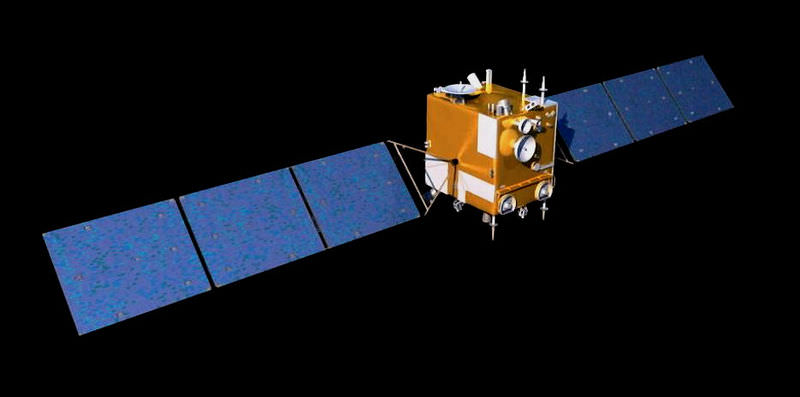[/caption]
On June 9, Chang’e-2, China’s second Moon orbiter, left our nearest astronomical neighborhood and headed out into the solar system. It had successfully completed its missions by April 1 and, thanks to its longevity, had enough fuel in reserve to continue exploring. According to China’s State Administration of Science,Technology and Industry for National Defence (SASTIND), making the trip into outer space from the Moon’s orbit is the major step from five remaining tasks assigned to the diminutive satellite.
“It’s the first time in the world for a satellite to be set off from the Moon in remote outer space,” said Zhou Jianliang, deputy chief engineer of the Chang’e-2 measure and control system of the Beijing Aerospace Control Center (BACC).
China’s technological developments are leaping ahead. While controlling a mission to the Moon 400,000 km away from the Earth is challenging enough, attempting to command a spacecraft from 1.5 million km presents a huge milestone in measure and control, telecommunications, data transaction and orbit design.
Before flying away, Chang’e-2 finished two additional tasks as of May 23. Its first was to take snapshots of the lunar northern and southern pole and the second was to descend into perilune orbit, about 15 km away from the surface. This time to take high-resolution images of the Sinus Iridum – the proposed landing ground for future Moon missions. The completion of satellite’s tasks has Chinese scientists smiling and hoping things continue well towards the end of next year.
“We are developing outer space measure and control stations in outer space and they will be capable to carry out tasks by the end of the second half next year,” said an SASTIND scientist, who declined to be named. “At that time, the satellite can be used to test the two stations’ functions.”
But the road ahead for Chang’e-2 isn’t going to be an easy one, simply because the satellite wasn’t designed to do what it is now doing. Extended distances mean unexpected problems with communication and control, but the little “Moon Goddess” just may be up to the task.
Original Story Source: China News.


Why is it our spacecraft have to look like washing machines with wings? Sigh.
Because every engineers dream is to launch a washing machine into space. What more cool is there that you can launch every day household objects into a lunar orbit 😉
Today, washing machine; tomorrow, Borg cube — resistance is futile; you will be assimilated!
“if they could fly a washing machine, my jimmy could land it!”
~apollo 13
Yo Tammy, there’s a rogue apostrophe at the beginning of the second sentence in the fourth paragraph: “It’s first was to…”
=^..^=
Hav yoo considurd a karear teechin inlgish grammer?
ching chong dong fu bong yee wang
oops,missspelt inglish.
love ya’, ivan3man… 😉
Yo Tammy, there’s a rogue apostrophe at the beginning of the second sentence in the fourth paragraph: “It’s first was to…”
=^..^=
Laugh if you will, but the next flag on the moon with be China’s.
The first long term base on the moon will be China’s also.
And do you think they will share their knowledge with the world like the USA did?
Don’t bet your fortune cookie on it Joe.
That will be very likely.
It would show their superiority.
He who control high ground win arguments!!!
Here is the start of an interesting series of China space history and future goals. (It is thorough, so it starts out with a piece that may not be in everybody’s interest; it quickly picks up the pace from there though.)
I believe I came away with an understanding of why China has been so late to space, hampered by earlier internal and external cooperation issues. And also perhaps why its future in space may be bright!
He who has high ground wins planet!!!